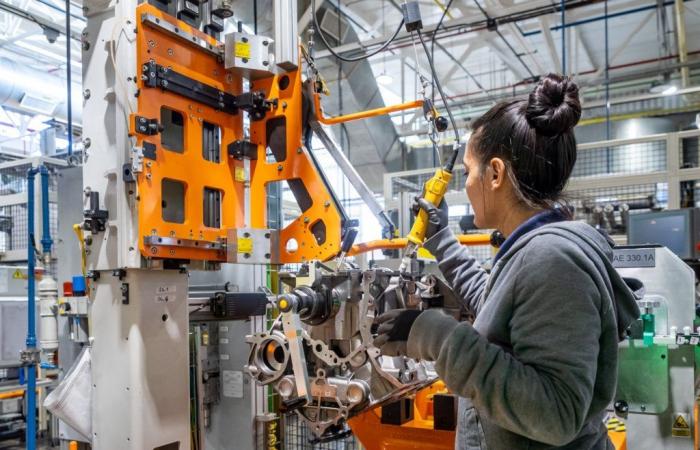To the production of its Ranger pickup, Ford Argentina It now adds the manufacturing of engines at its plant in General Pacheco, province of Buenos Aires, to precisely supply the assembly line of its truck.
The oval brand had already carried out a complete remodeling of its factory for the launch of the new generation of the medium pickup and now, with the inauguration of the new engine plant within the industrial complex, the production of its drivers is nationalized.
The renovated plant will produce, on the same line, the two turbodiesel engines that the Ranger offers today: the Lion 3.0 liter V6with 250 HP and 600 Nm of torque, and the four-cylinder Panther 2.0 literwith 170 HP and 405 Nm of torque, recognized for its solidity and fuel economy.
The latter will only be made in its monoturbo version, while the biturbo variant that is also offered in the Ford pickup range will continue to come from India. The brand commented that the two engines that are now manufactured in the country represent 80% of Ranger sales.
With this inauguration, the company closes a cycle of investments that began with 580 billion dollars for the development of the new truck and then continued with other 80,000 million more for the aforementioned engine plant.
Transformation also for engines
The Ranger pickup is the recipient of the new engines produced by Ford.
The engine plant follows the concept of manufacturing 4.0 already adopted in other areas of the factory, with a high level of technology, automation, connectivity and sustainability, Ford highlighted in a statement. In this way, the extensive use of digitalization and intelligent process control contribute to guaranteeing quality and efficiency in production.
“Since its launch, the new Ranger has improved in all indicators. Quality is a great differential of the product, which directly impacts the satisfaction of our customers,” said Martín Galdeano, president of Ford Argentina and South America.
According to the executive, despite the fact that it is a vehicle with 95% new parts, the current Ranger already began production with the same level of quality as the previous generationa platform that has been improved over more than 10 years of continuous improvement.
Autonomous cars move drivers from the engine plant to the Ranger pickup assembly line.
“This is unprecedented and, with the nationalization of engine production, we take another step in this process of constant improvement,” Galdeano highlighted.
The company highlighted that Ranger’s level of customer satisfaction has increased more than 20% since the arrival of the new generation. And if compared to other Ford plants in the world, Pacheco stands out in terms of quality, with an index 28% better than the global average of repairs per thousand vehicles produced.
The brand’s new engine factory has an installed capacity to produce 82,000 engines per year in two shifts. Its intelligent quality management system uses more than 2,000 sensors and 50 cameras to monitor motors and components throughout the process.
The 250 HP V6 engine is one of the most powerful among mid-size pickups.
These cameras are the ones that are validated during the assembly process so that the engine continues to advance from station to station.
The 129 workstations They feature automatic task control, including an intelligent screw tightening system. They were also designed to optimize ergonomics and comfort for operators, who have received more than 5,000 hours of training.
The positive pressure environment and intelligent air conditioning and LED lighting systems contribute to well-being and productivity.


